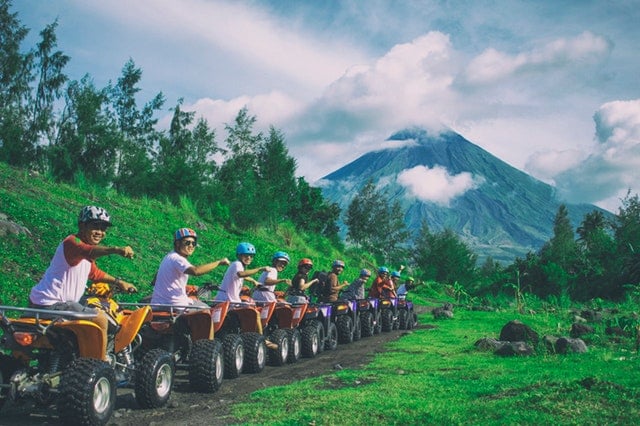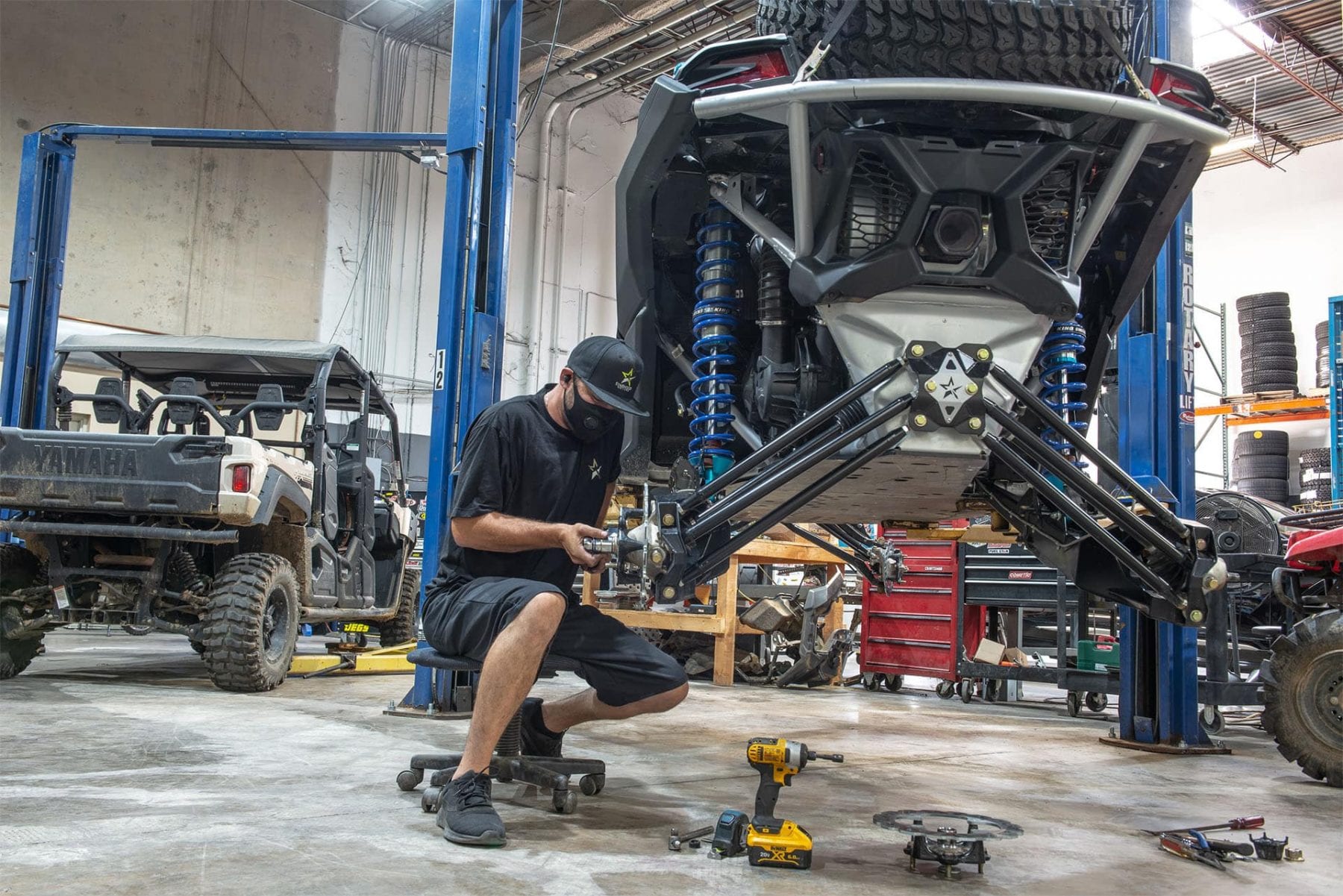ATV Riding Techniques: Grasping the Art of Off-Roading

Body Positioning
To effectively navigate with difficult off-road terrain, it is critical for ATV bikers to continually preserve correct body placing. Maintaining the right body placement while riding an ATV not only boosts control and stability yet also makes sure the biker's safety and security. By embracing the proper body positioning methods, cyclists can efficiently disperse their weight, improve their equilibrium, and lessen the threat of mishaps or injuries.
One key element of correct body positioning is keeping the feet on the foot secures. Putting the feet on the foot pegs allows the motorcyclist to keep stability and control over the ATV. The biker's knees ought to be somewhat bent, supplying a mild suspension to absorb shocks and keep balance. In addition, the motorcyclist's top body need to continue to be unwinded and flexible, permitting smooth and quick movements when essential. This includes maintaining a light hold on the handlebars to maintain control without excessive force.
Furthermore, the rider's eyes should constantly be concentrated ahead, checking the terrain and anticipating any kind of barriers or changes in the trail. By keeping a forward gaze, riders can make instant decisions and react properly to challenging surface.
Throttle Control
Building upon the importance of proper body placing for ATV cyclists, grasping throttle control is a crucial ability that makes it possible for bikers to efficiently navigate with different off-road surfaces. Strangle control refers to the ability to manage the quantity of power provided to the ATV's engine. By recognizing exactly how to manipulate the throttle, motorcyclists can guarantee a smooth and controlled acceleration, enabling them to navigate challenges with precision.
Unexpected or jerky activities can trigger the ATV to lose grip or end up being unpredictable, making it difficult to preserve control. This method permits the ATV to preserve a steady speed and offers much better grip, lowering the threat of accidents.
In enhancement to smooth inflection, cyclists must also learn how to balance the throttle with various other riding techniques, such as body positioning and braking. For example, when climbing steep hillsides, cyclists require to use adequate throttle to keep energy without subduing the ATV or creating wheel spin. In a similar way, when coming down high inclines, motorcyclists must utilize the throttle in combination with appropriate body stopping and placing to preserve control and avoid the ATV from sliding or tipping over.

Braking Methods
An essential YOURURL.com element of ATV riding techniques is understanding effective braking methods. Recognizing just how to brake properly can make a significant difference in your security and control over the automobile when it comes to off-roading. Among one of the most critical stopping strategies is using the front brake more than the rear brake. The front brake offers the majority of the stopping power, so it is important to use it carefully. It is crucial to keep in mind that severe braking with only the front brake can trigger the ATV to pitch forward, potentially leading to loss of control or also turning over. Consequently, it is advised to apply both brakes concurrently, however with more stress on the front brake. Another vital strategy is to prevent locking the wheels while stopping. Securing the wheels can lead to skidding, making it challenging to maintain control. To stop this, their website squeeze the brake levers slowly and release them a little if you feel the wheels locking. By understanding these braking techniques, you can enhance your ATV riding skills and make certain a enjoyable and secure off-roading experience.
Cornering Methods
One vital aspect of understanding ATV riding techniques is recognizing efficient cornering techniques. Catching on an ATV can be tough, but with the ideal techniques, motorcyclists can navigate turns safely and successfully. The key to successful cornering is to keep control of the ATV while optimizing grip and minimizing the danger of tipping over.
To carry out an appropriate cornering technique, bikers should come close to the turn at an ideal speed, ensuring Get the facts they are not going too sluggish or also rapid. It is essential to move the body weight in the direction of the within of the turn, leaning right into it to maintain balance and stability. This assists for the centrifugal force and keeps the ATV upright.
Furthermore, motorcyclists need to keep their eyes concentrated on the leave point of the turn instead of the immediate path ahead (ATV). This enables for smoother and a lot more specific guiding, as it aids the rider anticipate any obstacles or modifications in surface
In addition, correct throttle control plays a substantial duty in cornering. Cyclists have to regulate the throttle efficiently, staying clear of abrupt velocities or slowdowns, which can trigger loss of control.
Uphill and Downhill Riding
When navigating off-road surface, ATV motorcyclists must master the techniques for uphill and downhill riding to maintain control and make sure safety. Downhill riding, on the various other hand, needs riders to lean back and shift their weight in the direction of the rear of the ATV. By grasping the methods for uphill and downhill riding, ATV riders can confidently tackle various off-road terrains and delight in a secure and electrifying adventure.
Verdict
Finally, mastering the art of ATV riding calls for a combination of body positioning, throttle control, braking techniques, and efficient cornering. Uphill and downhill riding likewise need particular skills to navigate safely. By applying these methods, bikers can enhance their off-roading experience and improve their general control and safety and security on the ATV.
ATV Riding Techniques: Understanding the Art of Off-Roading is a comprehensive guide that delves into the intricacies of grasping the abilities needed for off-road ATV riding. Whether you are a novice or a knowledgeable motorcyclist, ATV Riding Techniques: Understanding the Art of Off-Roading uses crucial suggestions to aid boost your off-road ATV riding abilities to the following level.
